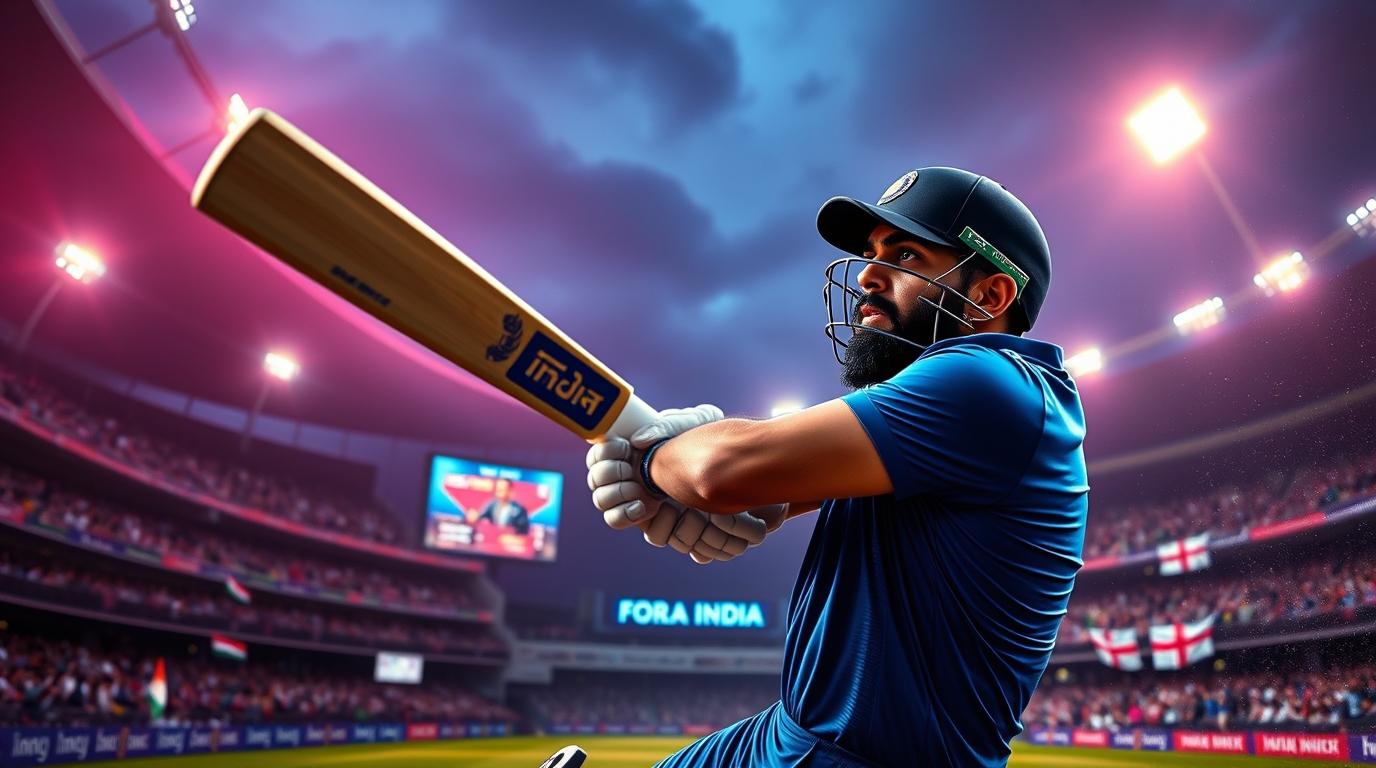The ICC Champions Trophy, one of the most prestigious tournaments in international cricket, has always been a platform for showcasing the best teams and players in the sport. Beyond the glory and bragging rights, the tournament also offers substantial financial rewards to participating teams, with prize money serving as a significant incentive. In this blog, we will explore the latest updates on the prize money distribution for the ICC Champions Trophy, focusing on winners’ earnings for the current year. We’ll delve into the structure of the payouts, how it compares to previous editions, and what this means for the future of cricket.
The Significance of the ICC Champions Trophy
The ICC Champions Trophy is a biennial One Day International (ODI) cricket tournament that brings together the top eight teams in the world based on their ICC rankings. Unlike the Cricket World Cup, which features more teams and a longer format, the Champions Trophy is known for its shorter, high-stakes matches, making every game critical. This exclusivity and intensity have made the tournament a fan favorite and a lucrative opportunity for players and cricket boards alike.
While the tournament was discontinued after 2017 due to scheduling conflicts, it made a triumphant return in 2023, reigniting excitement among fans and stakeholders. With renewed interest came an updated prize money structure, reflecting the growing commercial value of cricket and the ICC’s commitment to rewarding excellence.
Prize Money Structure for the ICC Champions Trophy 2023
For the 2023 edition of the ICC Champions Trophy, the International Cricket Council (ICC) announced a revamped prize money distribution system. This update aimed to align the tournament’s financial rewards with its status as a premier event in the cricketing calendar. Here’s a breakdown of the prize money allocation:
1. Winners’ Share
The winning team of the ICC Champions Trophy 2023 took home a staggering $4 million USD . This amount represents a significant increase from previous editions, underscoring the ICC’s efforts to make the tournament more competitive and financially rewarding. For context, the winners of the 2017 edition received $2.2 million USD, meaning the prize money nearly doubled in just six years.
2. Runners-Up Earnings
The runner-up team was awarded $2 million USD , providing a substantial consolation prize for reaching the final. This figure ensures that even teams finishing second are handsomely rewarded for their performance throughout the tournament.
3. Semi-Finalists’ Payouts
Each semi-finalist who did not advance to the final received $1 million USD . This payout recognizes the achievement of reaching the last four stages of the competition and incentivizes teams to perform at their best during the group stages.
4. Group Stage Participation Fees
Every team participating in the group stage earned a guaranteed participation fee of $500,000 USD , regardless of their performance. This baseline payment ensures that all teams benefit financially from being part of the tournament, even if they fail to progress beyond the group stage.
5. Player of the Match and Player of the Tournament Awards
In addition to team-based rewards, individual accolades were also accompanied by cash prizes:
- Player of the Match: Each player awarded “Player of the Match” received $10,000 USD .
- Player of the Tournament: The standout performer across the entire tournament was awarded $50,000 USD , recognizing their exceptional contribution to their team’s success.
Comparison with Previous Editions
To fully appreciate the scale of the 2023 prize money, it’s essential to compare it with earlier editions of the ICC Champions Trophy. Below is a summary of key differences:
As evident from the table, the total prize pool for the 2023 edition doubled compared to 2017, reflecting the ICC’s commitment to elevating the tournament’s stature. This increase not only benefits the players but also enhances the financial health of national cricket boards, enabling them to invest further in grassroots development and infrastructure.
Factors Driving the Increase in Prize Money
Several factors contributed to the significant boost in prize money for the ICC Champions Trophy 2023:
1. Growing Commercial Value of Cricket
Cricket has become a global phenomenon, attracting massive audiences and lucrative sponsorship deals. Broadcast rights, merchandise sales, and ticket revenues have surged, allowing the ICC to allocate more funds toward prize money.
2. Increased Competition Among Teams
With the rise of competitive cricketing nations like Afghanistan, Bangladesh, and Ireland, the ICC Champions Trophy has become more unpredictable and thrilling. Higher stakes demand greater rewards, motivating teams to perform at their peak.
3. Alignment with Other Major Tournaments
The ICC ensured that the Champions Trophy’s prize money aligns closely with other marquee events like the Cricket World Cup and T20 World Cup. This parity reinforces the tournament’s importance within the cricketing ecosystem.
4. Support for Emerging Economies
By increasing participation fees and payouts, the ICC aims to support cricket boards in emerging economies. These funds can be reinvested into domestic leagues, coaching programs, and facilities, fostering long-term growth.
Impact on Players and Teams
The enhanced prize money has far-reaching implications for both players and national cricket boards:
1. Motivation for Excellence
Higher rewards serve as a powerful motivator for players to deliver their best performances. Knowing that victory comes with life-changing financial benefits adds an extra layer of competitiveness to the tournament.
2. Financial Stability for Players
For many cricketers, especially those from smaller cricketing nations, the prize money provides much-needed financial security. It allows them to focus on their careers without worrying about monetary constraints.
3. Boost for National Boards
The increased payouts enable cricket boards to fund developmental initiatives, such as youth academies, women’s cricket programs, and grassroots outreach. This investment helps nurture the next generation of talent.
4. Enhanced Prestige
A larger prize pool elevates the tournament’s prestige, drawing top-tier players and ensuring high-quality cricket. Fans are treated to thrilling encounters, while broadcasters and sponsors benefit from heightened viewership and engagement.
Challenges and Criticisms
Despite the positive aspects of the increased prize money, some challenges and criticisms persist:
1. Disparity Between Teams
While the ICC Champions Trophy rewards top-performing teams generously, lower-ranked teams outside the tournament miss out entirely. Critics argue that distributing a portion of the prize money to these teams could promote inclusivity and global development.
2. Pressure on Players
The heightened stakes may place additional pressure on players, potentially affecting their mental health and performance. Striking a balance between competition and well-being remains crucial.
3. Sustainability Concerns
With rising costs associated with hosting tournaments, questions arise about the sustainability of continually increasing prize money. Ensuring long-term financial stability for the ICC and its member boards is vital.
Looking Ahead: Future of the ICC Champions Trophy
The success of the 2023 edition suggests a bright future for the ICC Champions Trophy. If the ICC continues to prioritize innovation, inclusivity, and financial rewards, the tournament could rival the Cricket World Cup in terms of popularity and impact. Potential areas for improvement include:
- Expanding the number of participating teams to include emerging nations.
- Introducing gender-neutral formats to promote equality in cricket.
- Leveraging technology to enhance fan experiences and engagement.
Conclusion
The ICC Champions Trophy 2023 marked a new era for the tournament, characterized by record-breaking prize money and unparalleled excitement. With winners taking home $4 million USD and a total prize pool of $16 million USD, the ICC has set a benchmark for rewarding excellence in cricket. While challenges remain, the tournament’s evolution reflects the sport’s growing commercial value and global appeal. As cricket continues to captivate millions worldwide, the ICC Champions Trophy stands as a testament to the enduring passion and dedication of players, fans, and administrators alike.
By investing in the future of the game and celebrating its brightest stars, the ICC ensures that the Champions Trophy remains a cornerstone of international cricket for years to come.






